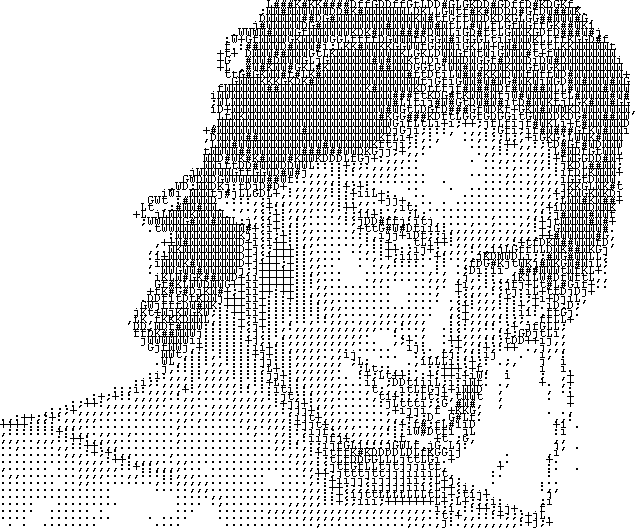

- Small ascii art how to#
- Small ascii art generator#
- Small ascii art verification#
- Small ascii art code#
If your code looks different from mine, don’t worry! There are many ways to structure this project. It should therefore be a useful reference regardless of which language you are using. I’ve written it in Python, but I’ve also tried to avoid using any Python-specific constructs. If you get stuck (defined as making zero progress for 30 minutes), you can get some inspiration from my example project.
Small ascii art generator#
In these you will build on top of your ASCII-art generator to add glorious technicolor to your pictures, make a Facebook-style flag-overlay, and even build an ASCII-webcam to replace Apple’s Photobooth. Once you finish, there are several extension projects.
Small ascii art verification#
Make sure that it looks “sensible” before going onto the next section - bite-size verification of small parts of your code is very important for making sure that you’re on the right track. You won’t actually generate an ASCII picture until the end of step 5 (it will be worth the wait, I promise), so at the end of each section there’s a block of intermediate output that you should print and verify. The initial project is broken up into 5 sections. The best modern ASCII-art can expect to fetch as many as 10,000 retweets at auction. It is created by printing characters to your terminal so as to recreate the contours of a source image. ASCII is a primitive but beautiful art form first developed by the Sumerians in 4000BCE. You’re going to write a program to turn images into ASCII-art. Subscribe now to receive these invaluable improvements in your inbox The author could make their code cleaner and easier to work with. Things that I think could be better, and offer suggestions for how Real-world ways to make your code cleaner and more professional.Įach week I review code sent to me by one of my readers. Newsletter to receive concise weekly emails containing specific, the the one above) and with different scales to find out what gives better result.Subscribe to my new "Programming Feedback for Advanced Beginners" You can play arround with different ramps (e.g.

And don't forget about line breaks.Ģ:19 - running the application for the first time to check results in the console.Ģ:33 - the smaller scale is the better results we get. Now we are ready to output every character. Notice that we are dividing the value of "average pixel" by 65536 - this is because Golang's () returns red, green and blue components as 16-bit numbers having 65536 possible values each.
Small ascii art how to#
The funny part is - how to convert grayscale value to an ASCII character? There are some examples of greyscale ramps - you can check more details here.įor example we can use or but I decided to go with even more simple idea is - the darker color is the more "dense" ASCII character should be. The bigger scaleX and scaleY values the smaller (and with less quality) the resulting ASCII art will be. Note that we are doing some range checks here to avoid going out of the image boundaries.ġ:47 - now we can just iterate through our image and find average pixel values.īy doing some experiments I came to conclusion that the good ratio is around 2:1 to look nice on terminal screen. It will convert rectangle (x, y) - (x+w, y+h) of image img to grayscale and will find average value of all pixels in this rectangle. That's why we need to group or scale a number of pixels and replace them with one single "average" pixel. For example image 400 by 400 pixels is a rather small image, however you will not find a terminal with 400 colums or 400 rows. Therefore we need to do some type conversion here.ġ:20 - obviously one pixel of a real image cannot be mapped one-to-one to an ASCII character as ASCII character on the screen takes much more space. Note that Golang does not allow to multiply int (or in this case uint32) with float64 constants. There are several ways how to do it and in this case we will use a formula that was used for NTSC analogue television encoding system.

Note that we are importing image/png package - this way we instruct Golang which decoder should be used for loading the image.įor consistency we are checking that there are no errors and the image is loaded properly.ġ:07 - define grayscale function that will convert RGB color to a grayscale component. Usually such type of images give best results for ASCII art.Ġ:40 - define loadImage function that will load image from a file system. This image is nice as it has some contrast - some light and dark areas with clear borders. Let's break down the solution and comment on some complex or interesting things.Ġ:20 - As starting point we'll use an image with Golang logo. Disclaimer: never use this code in production.


 0 kommentar(er)
0 kommentar(er)
